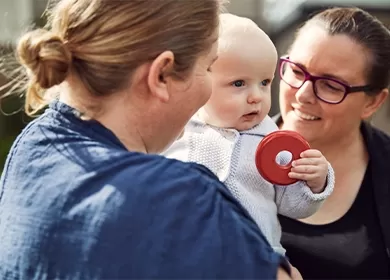Don’t have an account?
Select the donation type you’d like to make
How blood makes your ink stick
Tattoos have been around for centuries, dating back to over 5,700 years ago. That's right — even Otzi the iceman (a mummy from around 5,300 years ago) was covered in tattoos, which are thought to be a form of medical treatment.
Today, tattoos can mean all sorts of things. Whether symbolising the loss of a loved one or expressing a favourite song lyrics, they’re widely accepted in Australia. In fact, 1 in 4 Australians above 18 has at least one tattoo! But, do you know how your blood interacts with your tattoo?
Getting your tatt
Firstly, let's talk about getting the tattoo. Some of this you’ll already know, like the part where someone pokes you with a needle over and over again, and with each poke, ink is transferred from the needle into the layer of the skin above the blood vessels and nerves, called the dermis.
After the tattoo there is often a small amount of clear liquid that covers the tattoo. This is blood plasma, which is closing over the wound that the tattoo has created.
Let’s talk plasma
Now, you may be wondering what plasma is. Basically, it makes up just over half of your blood and is full of proteins that can be used in 18 different ways. It carries red blood cells and white blood cells so our bodies can function optimally, as well as hormones, nutrients and chemical messengers to keep us healthy.
One key cell that plasma carries is a white blood cell called a macrophage, which is the part that comes into play when you get a tattoo.
Macrophages (literally meaning “big eater”) know when foreign objects have entered the body. They engulf the foreign substance and try to break it down. This is because they don't want something that could be dangerous to go near important organs of the body.
So, when plasma covers the tattoo, there are macrophages within it. This means the macrophages are going to destroy the tattoo ink pigments, right? Wrong.
Macrophages choke on ink
Although the macrophages will try their best to destroy the ink pigments, they often just can’t do it. That’s because, compared to your cells, the pigments are extremely big. The macrophage engulfs the tattoo pigment but it’s unable to destroy it. Then you’re left with the macrophages remaining in the outline of your tattoo, trying to hold your ink in place to prevent what they see as a ‘foreign object’ moving anywhere else in the body.
Macrophages don't live forever, so they pass your tattoo pigment on to the new cell to prevent it from passing through the body.
Pretty cool, huh?
But this isn't the only blood related thing you should think about when you get a tattoo.
Some people think you can’t give blood if you have a tattoo, but this isn’t true!
In fact, you don’t even need to wait — you can donate plasma straight away (as long as the tattoo was performed in a licensed tattoo parlour in Australia). Or, if plasma isn’t for you, you just need to wait one week after your new ink and you can give blood or platelets instead.
From helping during heart surgery to treating cancer, plasma is really powerful and every year, the need goes up. If you're ready to donate, call 13 14 95 or book online (we know you don’t have a fear of needles).




